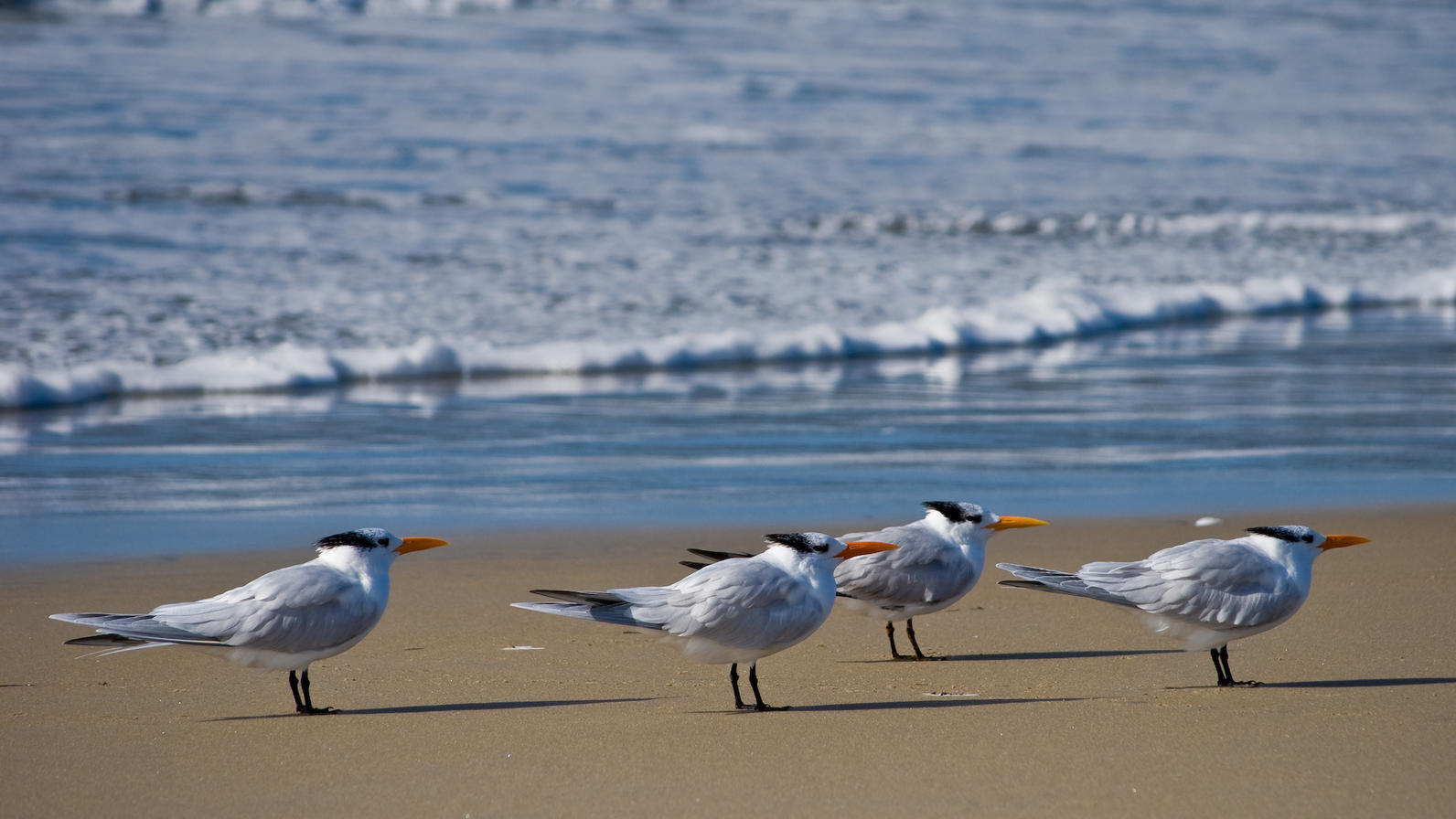
With shorebirds facing population-level challenges up and down the Pacific Flyway, a major conservation plan – driving largely by Audubon – was released in April that seeks to help. In all, 53 international conservation organizations contributed to the creation of the Pacific Americas Shorebird Conservation Strategy and have committed to its implementation.
Shorebirds are especially vulnerable to environmental and human disturbances and as a group are not faring well. Globally, 45% of Arctic shorebird populations are decreasing.
Audubon representatives, including Audubon California Conservation Director Andrea Jones and Stanley Audubon Pacific Flyway Director of Bird Conservation Stan Senner, helped convene a small international steering committee which developed the scope of the plan.
Status of birds in the Pacific Americas Flyway
In the Pacific Americas Flyway, 11% of shorebird populations show long-term declines, 46% have unknown population trends and 43% are stable. Habitat conversion and degradation will almost certainly continue to stress ecosystems and impact shorebird populations, as will disturbance and direct mortality. Sea-level rise and other climate-related changes will intensify current stresses to shorebirds, and societal responses to a changing climate (e.g., coastline hardening, flood control, large-scale reallocation of land uses) could magnify these stresses.
Integrated conservation strategies
Along their twice-annual journeys, long-distance shorebird migrants in the flyway use a series of critical stopovers in 14 countries to rest, refuel and make the transition between Arctic tundra, temperate rainforest mudflats and estuaries, coastlines, mid-latitude desert and tropical mangrove forest habitats.
At any point in the year, Southern Hemisphere coastlines support some species of migrant shorebirds. An effective strategy that includes all of the hemisphere’s shorebirds must integrate conservation interventions across the full range of geographic, ecological and cultural landscapes.
A number of international conservation efforts exist to benefit shorebirds, such as the Western Hemisphere Shorebird Reserve Network and Important Bird Areas program, as well as shorebird conservation plans at national, regional and local scales. If implemented separately, however, these plans may not achieve conservation for shorebirds at the population level.
Conservation focus
The Pacific Americas Shorebird Conservation Strategy focuses primarily on the Pacific coasts of North, Central and South America and spans 120 degrees of latitude from northeastern Russia and northwestern United States of America to southern Chile. The project area is subdivided into four focal geographic regions (e.g., Arctic/subarctic, North-temperate, Neotropical and South-temperate) that share broad habitat characteristics and similar conservation challenges and opportunities.
Together, these regions encompass the suite of habitats used by 21 target shorebird species during their annual cycles along the Pacific coast of the Western Hemisphere. They were chosen as conservation targets because they are representative of specific habitats in the Flyway, populations of conservation concern or endemic to the Flyway.
By Garrison Frost
A New Colony of Caspian Tern Decoys on Aramburu Island
Richardson Bay Audubon Center is attacting breeding pairs of Caspian Terns with these newly painted tern decoys—a strategy successfully used by previous tern relocation efforts.




